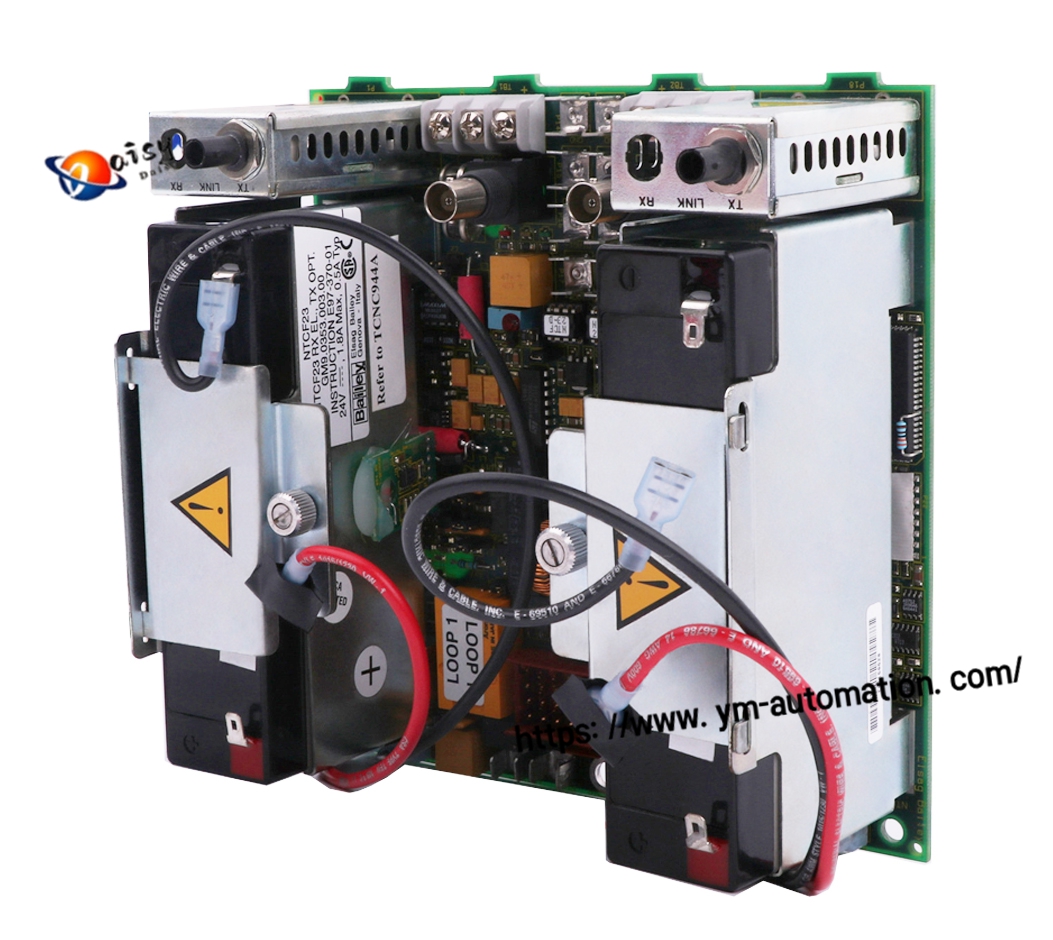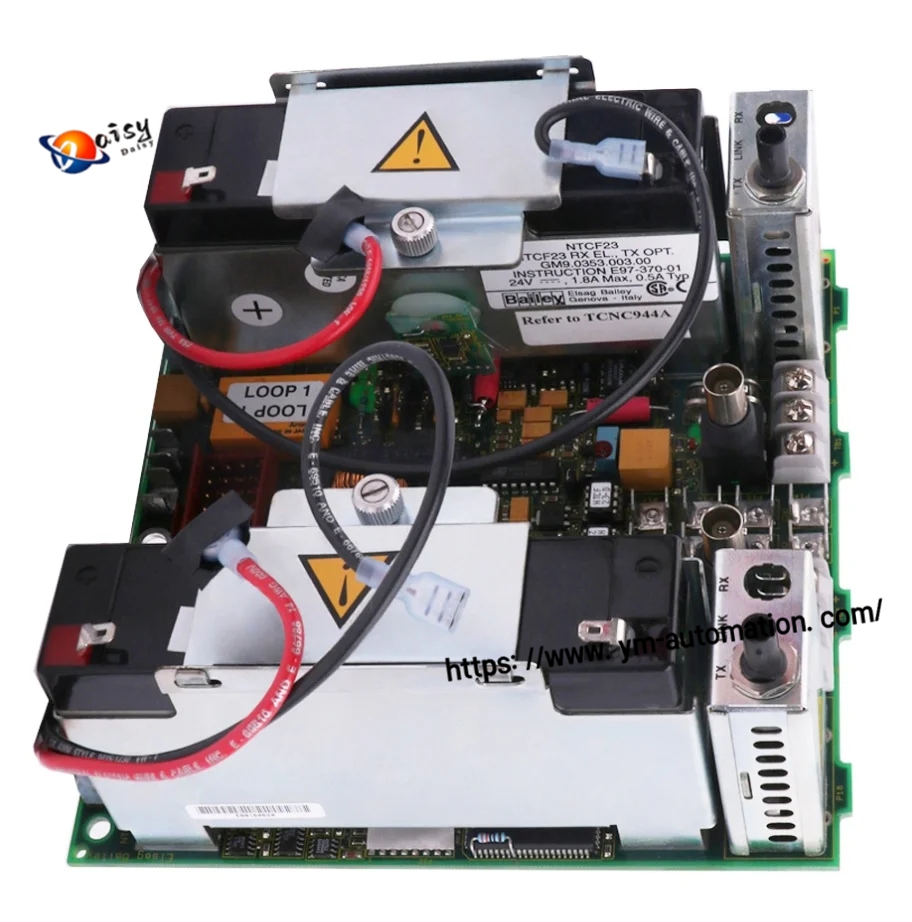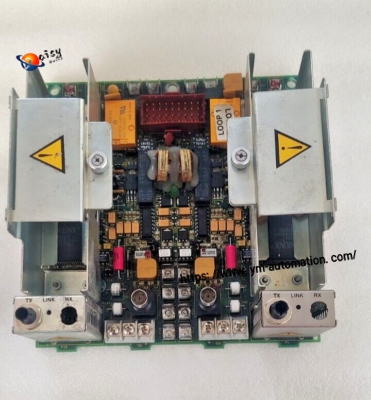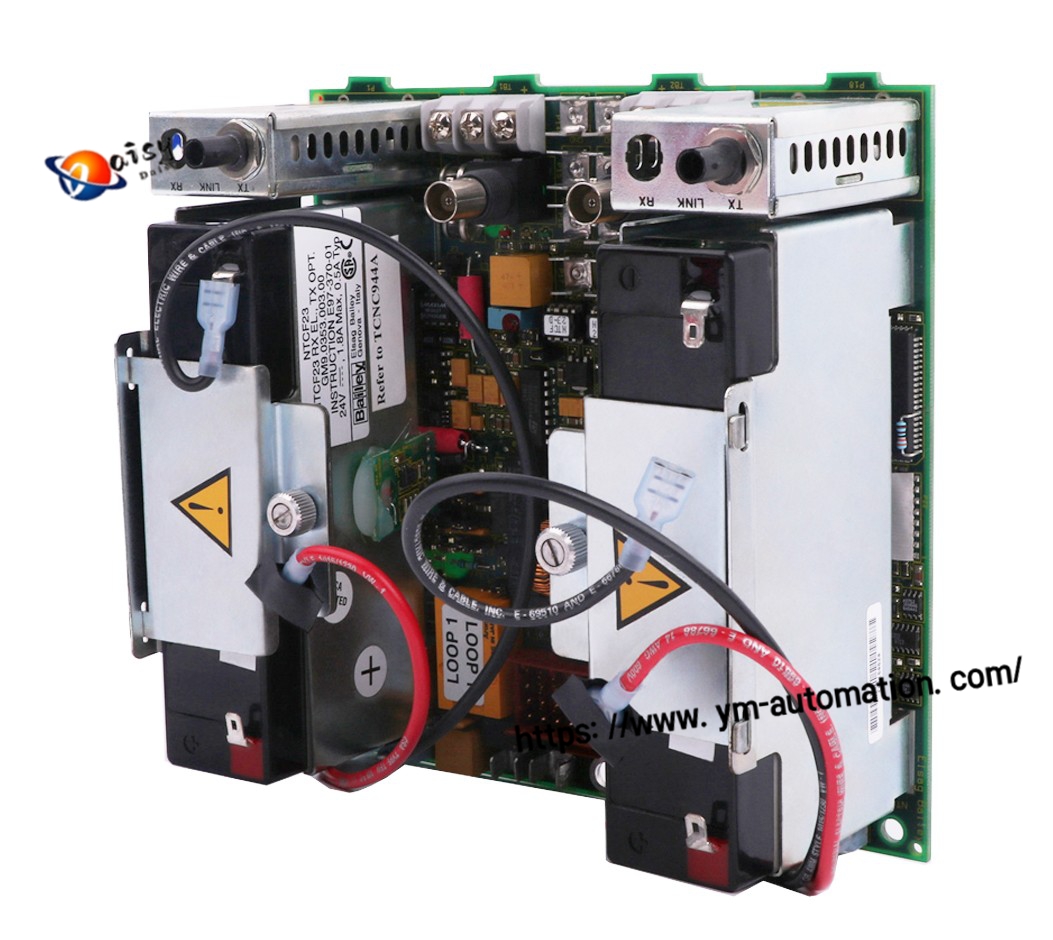ABB NTCF23 is an electro-optical conversion terminal unit, mainly used in industrial automation control systems to realize the conversion of electrical signals to optical signals. Below is an introduction to its specifications, application scenarios, and operating principle:
1. Specifications
Operating Voltage: 12-24V DC
Output Frequency: 50kHz
Dimensions: 78.74mm × 233.68mm × 213.36mm
Weight: Approximately 0.36kg
Operating Temperature Range: -20℃ to +55℃
Certifications: CE, UL
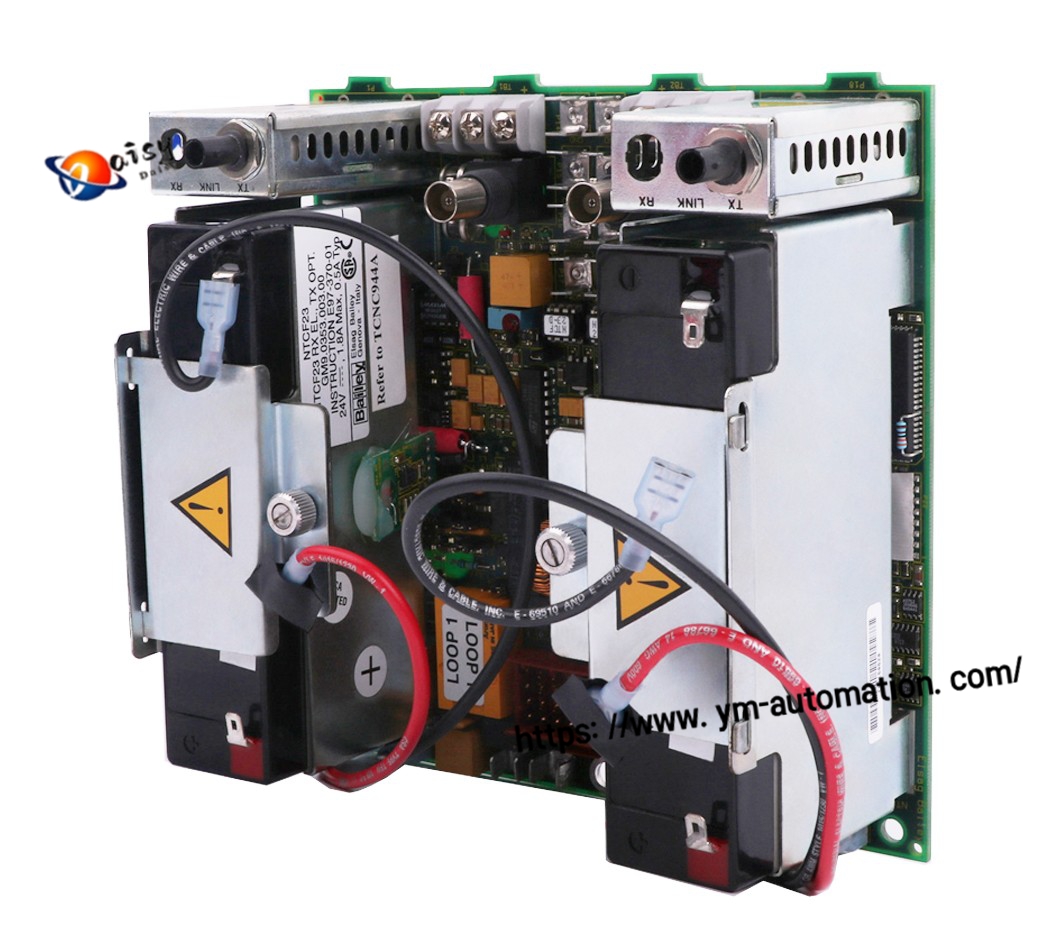
2. Application Scenarios
Factory Automation: On factory production lines, it can convert electrical signals from various controllers, sensors, and actuators into optical signals, which are transmitted through fiber optic networks at high speed and stably, enabling precise control and monitoring of the production line.
Process Control: In process industries such as chemical engineering and electric power, it is used to connect different control equipment and instruments, ensuring accurate and reliable data transmission in complex industrial environments and safeguarding the safe and stable operation of production processes.
Power Systems: It can be applied in power system substations, power plants, and other locations to realize high-speed data communication between electrical equipment, such as signal transmission between protection devices and monitoring systems.
3. Operating Principle
The ABB NTCF23 converts input electrical signals into optical signals through its internal photoelectric conversion components. When an electrical signal is input to the module, it drives the photoelectric conversion chip, which then emits a corresponding optical signal. This optical signal is transmitted through an optical fiber. At the receiving end, the optical signal is converted back into an electrical signal via optoelectronic components—thus realizing the conversion between electrical and optical signals and the transmission of data in fiber optic networks.
It supports both single-mode and multi-mode optical fibers, which can adapt to different fiber optic network layouts and transmission distance requirements. Additionally, it is compatible with the Modbus/TCP communication protocol, enabling interoperability with a variety of devices.
